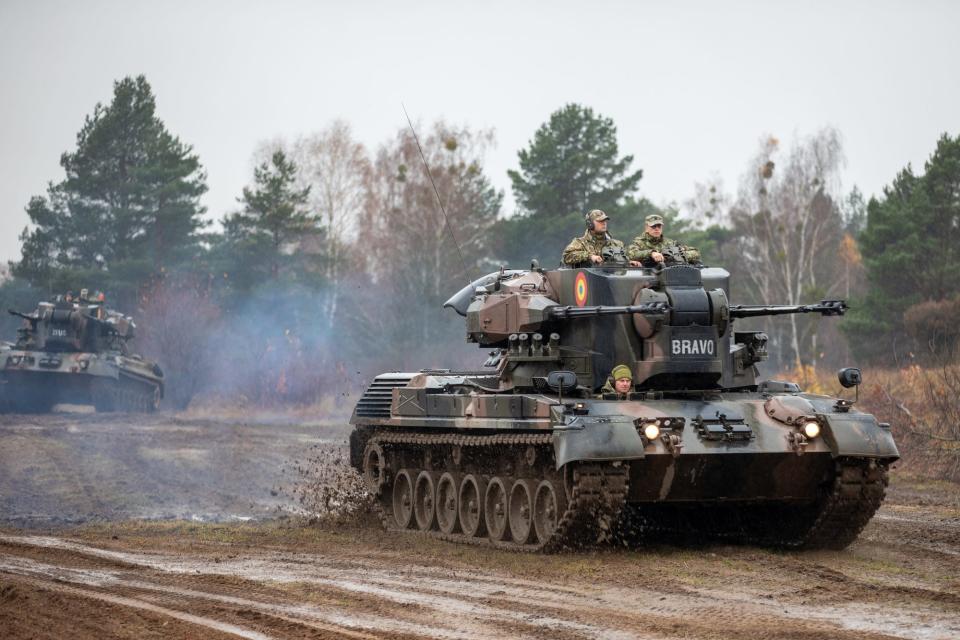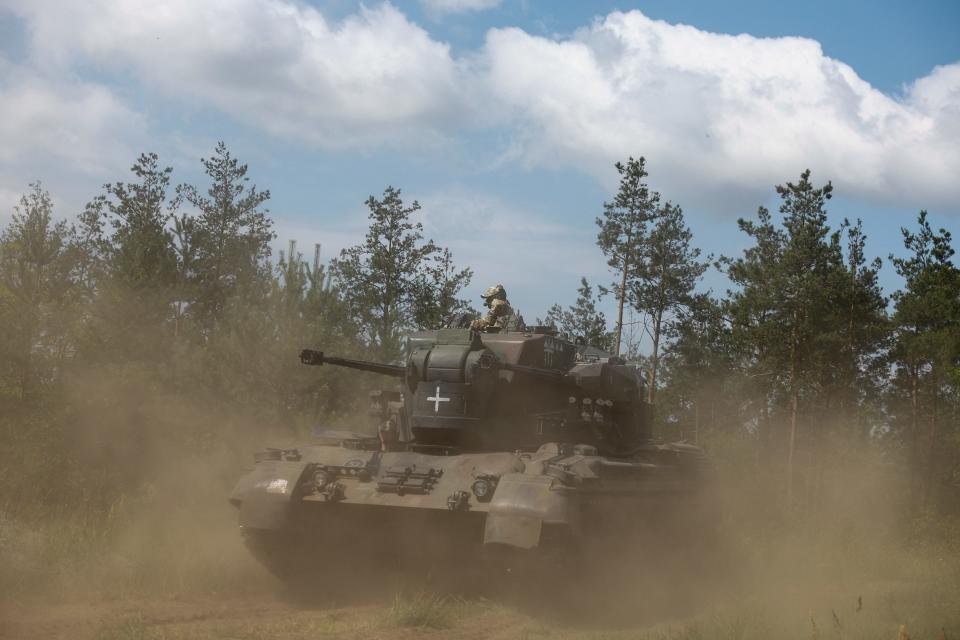German-made anti-aircraft guns from the 1960s are one of Ukraine's best weapons against Russia's exploding drones, and this video shows one blasting them out of the sky
Ukraine has relied on its decades-old Gepard cannons to defend against Russian drones and missiles.
A new video published Thursday by the Ukrainian military shows the anti-aircraft guns in action.
Kyiv's Gepards have lacked sufficient ammunition but are slated to receive a huge firepower boost.
Cold War-era Gepard cannons have emerged as one of Ukraine's more effective weapons against Russian drones as Kyiv continues to battle Moscow's relentless aerial attacks, and a new video shows just how powerful these self-propelled anti-aircraft guns are in action.
The Ukrainian Air Force published footage to various social media channels on Thursday of a German-made Gepard engaging Iranian-made Shahed drones above the southern port city of Odesa, which has been a regular target of Russian strikes for several weeks as Moscow has ramped up attacks around the Black Sea area.
The shaky, 31-second video starts off by showing the Gepard's cannons rapidly fire at the sky in two separate bursts. An explosion can be seen in the distance, which is followed by a small fireball.
An unidentified Ukrainian soldier can be heard exclaiming "Yes!" before the Gepard fires off another two bursts, which results in another small explosion and fireball in the sky. It's followed by another apparently positive remark by an unidentified Ukrainian soldier.
—Ukrainian Air Force (@KpsZSU) September 7, 2023
Ukraine's air force did not specify what, exactly, was destroyed beyond just noting that the target was an enemy "Shahed." In a Facebook post, Kyiv's southern air command identified the targets as "Shahed-136/131," which are two different types of Iranian-made drones that Russia's military has used frequently in Ukraine.
The Shahed-136 — an explosive loitering munition like the 131 — first emerged in the skies above Ukraine around a year ago and has been a weapon of choice for Russian President Vladimir Putin's military, which uses these systems to terrorize Ukrainian cities and civilians and carry out attacks on the country's energy infrastructure.
Gepards, which were first developed in the 1960s, have proven to be very effective in downing these systems, as well as other low-altitude Russian drones and cruise missiles. These weapons — armed with two powerful automatic cannons that can fire 550 rounds a minute — are a crucial component of Ukraine's complex air-defense network because they're highly mobile and allow Kyiv to save its limited supply of expensive surface-to-air missiles for more difficult threats.

The first Gepards arrived on the battlefield last year, and Germany has since sent 46 of these weapons, with another six "in planning/in execution," according to a list of the country's military aid for Ukraine.
But despite their success in downing some of Russia's many different aerial threats, these systems have ultimately been bogged down by a lack of sufficient ammunition, because the only country that still made the ammo — Switzerland — refused to sell to Kyiv due to its neutrality.
However, Germany figured out how to produce more 35mm air-burst munitions for its Gepards. Rheinmetall AG, a German arms manufacturer, moved production in-country from Switzerland earlier this year after signing a contract to make and deliver 300,000 rounds to Ukraine — including shipping 40,000 by the end of 2023.
On Monday, the company said it finally sent the first batch of this new ammunition to Kyiv, and although it did not specify how many munitions were included, Germany's list of military aid was updated on Tuesday to reflect that an additional 10,080 rounds had been delivered for the Gepards.

The firepower boost for Ukraine's Gepards comes at a crucial moment. Russia has been increasing its domestic production of drones, which experts say will likely lead to bigger attacks on Ukrainian military and civilian targets in the coming months.
White House National Security Council Spokesperson John Kirby told reporters last week that Russia continues to bombard Ukraine with missiles and drones because it can't securely fly aircraft into Ukrainian airspace. Because of this the Biden administration will continue to prioritize air-defense capabilities for Kyiv, he added. US NATO partners have also made air defense a priority.
The Pentagon announced two separate security assistance packages for Ukraine this week valued at up to $775 million and consisting of unspecified equipment to support Kyiv's air-defense operations. The packages also included 155mm and 105mm artillery rounds, depleted-uranium munitions for tanks, missiles and anti-armor capabilities, and ammunition for High Mobility Artillery Rocket Systems, or HIMARS.
Read the original article on Business Insider


